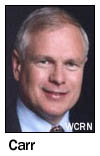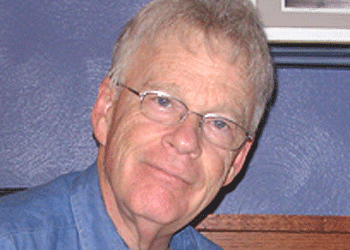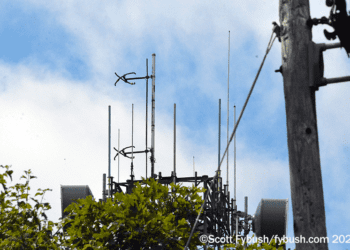Top Ten Stories of 2015
By SCOTT FYBUSH

It’s time once again for our Year in Review, the 22nd time we’ve gathered up our headlines from the previous 12 months and tried to sum it all up for you. Year in Review installments will appear daily all week (including a bonus edition tomorrow!) so check back every day for a new installment! We’ll resume our regular NorthEast Radio Watch report on Monday, January 4, 2015, and Tower Site of the Week is back Friday, Jan. 8 to ring in the New Year. (And in the meantime, our own Twitter and Facebook feeds and RadioInsight will be here with any breaking news!)
Error, group does not exist! Check your syntax! (ID: 17)
In today’s installment, we tackle what were (in our own highly-colored opinion) the ten most interesting stories from the year that’s ending. Come on along for the ride!
1. Translators get hot
2015 was a big year for little signals on the FM dial. The second round of low-power FM signals granted in 2014 began to hit the air in earnest all over the region, split about 50/50 between religious broadcasters and grassroots community groups. Still more of the 2014 permittees will hit the airwaves in 2016 after extending their construction permits.
 Those LPFMs have lots of competition for scarce dial space, though, thanks to FCC policies that have created a massive boom in FM translators. These small signals – 250 watts at most – were originally meant to bring FM service to remote, underserved communities. But recent years saw the rise of the “satellator,” fed from hundreds or thousands of miles away by religious networks, and then the “metro signal,” as Saga calls its urban translators fed from FM HD subchannels.
Those LPFMs have lots of competition for scarce dial space, though, thanks to FCC policies that have created a massive boom in FM translators. These small signals – 250 watts at most – were originally meant to bring FM service to remote, underserved communities. But recent years saw the rise of the “satellator,” fed from hundreds or thousands of miles away by religious networks, and then the “metro signal,” as Saga calls its urban translators fed from FM HD subchannels.
After years of pressing, 2015 turned out to be AM broadcasters’ big year for translators. The FCC had already begun allowing AM stations to use existing translators in their hometowns or moving the signals in from nearby locations. Then came the surprise announcement around the Radio Show in Atlanta that the Commission was seriously contemplating a window that would allow AM stations to move one translator each from as far away as 250 miles. And then came the actual announcement of the window, which will open January 16 and run in two phases through most of 2016.
Will the addition of more translators save AM? Or will it just save AM owners while continuing to funnel listeners away from the senior band? Who’ll profit from selling translators to be moved, and who’ll end up spending too much? We’ll be following this story closely throughout 2016.
(And we’ll also be assisting broadcasters in taking advantage of the opportunities to buy, sell and move signals; contact Fybush Media to find out how our consulting services can help you!)
[private]
2. Voltair muddies the waters
 No crowds were bigger at that Atlanta Radio Show than the ones that jammed one end of the exhibit floor to hear from Massachusetts-based 25/Seven and its rivals at Nielsen Audio. After a year in which 25/Seven set the broadcast world atwitter with its $15,000 Voltair processing box, which promised to enhance stations’ abilities to make their PPM encoding heard by Nielsen’s meters, Nielsen fought back.
No crowds were bigger at that Atlanta Radio Show than the ones that jammed one end of the exhibit floor to hear from Massachusetts-based 25/Seven and its rivals at Nielsen Audio. After a year in which 25/Seven set the broadcast world atwitter with its $15,000 Voltair processing box, which promised to enhance stations’ abilities to make their PPM encoding heard by Nielsen’s meters, Nielsen fought back.
While it didn’t ban the use of Voltair (unlike Canada’s Numeris ratings service, which did), Nielsen unveiled a new version of its encoding technology. The new “Enhanced CBET” was hastily rolled out in the fall, prompting some broadcasters to complain that its encoding was a little too audible on the air.
3. Howie, home at last amidst Boston talk maelstrom
 In the end, was there any other move for either Entercom or its longtime problem child, host Howie Carr, to make? Carr’s high-profile defection in 2014 from WRKO to upstart rival WMEX (1510) turned out to be about as successful as anything else on 1510 in recent decades, which is to say, not at all. Carr’s visibility “up by the police calls” suffered greatly, and a network of new suburban affiliates was a poor replacement for WRKO’s 50,000-watt signal. And so in March, Howie announced he was bringing his show back to WRKO. This time around, the Entercom station is simply another affiliate along Carr’s network, which appears to have blunted some of the tension that long existed between Carr and Entercom management.
In the end, was there any other move for either Entercom or its longtime problem child, host Howie Carr, to make? Carr’s high-profile defection in 2014 from WRKO to upstart rival WMEX (1510) turned out to be about as successful as anything else on 1510 in recent decades, which is to say, not at all. Carr’s visibility “up by the police calls” suffered greatly, and a network of new suburban affiliates was a poor replacement for WRKO’s 50,000-watt signal. And so in March, Howie announced he was bringing his show back to WRKO. This time around, the Entercom station is simply another affiliate along Carr’s network, which appears to have blunted some of the tension that long existed between Carr and Entercom management.
The next act in another turbulent year in Boston talk radio came two months later, as Entercom decided not to renew its expiring contract with iHeart’s Premiere syndication arm for Rush Limbaugh’s midday show. Instead, WRKO moved somewhat away from hard-edged political talk, shifting morning host Jeff Kuhner to Rush’s midday slot and launching a new news-based morning show.
 Embarrassingly enough for iHeart and Limbaugh, nobody else in town was eager to pay a premium price for a host whose best years seem to be far behind him – not WMEX, which struggled through multiple schedule changes all year as it transitioned to new ownership, and not Salem, which launched its own new Boston talker, WBIX (1260). And so iHeart itself pulled the plug on one of its third-tier offerings, Spanish-language WKOX (1430 Everett), in order to give Limbaugh a home on what became “Talk 1430,” mixing Fox Sports with Premiere talk and drawing near-zero ratings along the way.
Embarrassingly enough for iHeart and Limbaugh, nobody else in town was eager to pay a premium price for a host whose best years seem to be far behind him – not WMEX, which struggled through multiple schedule changes all year as it transitioned to new ownership, and not Salem, which launched its own new Boston talker, WBIX (1260). And so iHeart itself pulled the plug on one of its third-tier offerings, Spanish-language WKOX (1430 Everett), in order to give Limbaugh a home on what became “Talk 1430,” mixing Fox Sports with Premiere talk and drawing near-zero ratings along the way.
4. Canadian media’s terrible year
The massive consolidation in Canadian media is a story that’s largely gone untold across the border even as a handful of enormous players have swallowed up nearly all the TV, radio and newspaper outlets in most Canadian markets in recent years. The conglomeration north of the border far exceeds what’s allowed in the US, especially on TV, where Bell, Rogers and Shaw/Corus each own not only local stations but also the networks that feed them and the cable or satellite systems that transmit those signals to viewers.
So it was particularly disheartening when several of those giants made big cutbacks in 2015. Bell’s year was especially devastating: after losing a good deal of credibility when the head of its CTV network acknowledged trying to interfere with news story judgment, the autumn brought massive job cuts all over Bell, including at its local radio stations in markets large and small. (In Ottawa, for instance, much of the CFRA 580 newsroom was axed, and the reporters who remained were left to write headlines to be read by local CTV television anchors.)
Smaller players weren’t immune from the turmoil either, most notably in Hamilton, where December brought the end of a valiant attempt to do intensive local TV news at Channel Zero’s CHCH (Channel 11). The station’s staff was fired en masse, its daytime newscasts and talk shows were cancelled, and a fraction of the old staff was hired back by a new operator to do a much smaller schedule of local news.
5. CBS job cuts
 On the US side of the border, things weren’t much brighter at many of the big owners. After Dan Mason’s retirement from CBS Radio, new leader Andre Fernandez spent much of the year cutting into what had once been fairly healthy staffing levels at many clusters. Philadelphia’s WOGL lost morning man Ross Brittain and GM Jim Loftus, for instance, while Pittsburgh’s WDSY and WBZZ lost several veteran personalities. In Hartford, Dana Whelan was ousted (and not replaced) as WTIC news director, and the entire cluster ended up under the aegis of a Boston-based general manager.
On the US side of the border, things weren’t much brighter at many of the big owners. After Dan Mason’s retirement from CBS Radio, new leader Andre Fernandez spent much of the year cutting into what had once been fairly healthy staffing levels at many clusters. Philadelphia’s WOGL lost morning man Ross Brittain and GM Jim Loftus, for instance, while Pittsburgh’s WDSY and WBZZ lost several veteran personalities. In Hartford, Dana Whelan was ousted (and not replaced) as WTIC news director, and the entire cluster ended up under the aegis of a Boston-based general manager.
Yet some of the bigger moves that had breathlessly been predicted in certain corners of the radio universe once again failed to materialize: CBS Radio didn’t sell any of its signals, nor did it merge with any of the other big group owners, suggesting that in 2016 the company will soldier on in somewhat reduced form, just like the other big guys.
[/private]
Error, group does not exist! Check your syntax! (ID: 17)
[private]
6. Meanwhile, at Cumulus…
 If Dan Mason got to exit on his own terms, his counterpart at the other big “C” company was nowhere near as fortunate. Lew Dickey, Jr.’s luck finally ran out at the worst possible moment: just as the radio industry was converging on his hometown of Atlanta for the Radio Show in late September, Cumulus ousted Lew, Jr. and his brother John from corporate management.
If Dan Mason got to exit on his own terms, his counterpart at the other big “C” company was nowhere near as fortunate. Lew Dickey, Jr.’s luck finally ran out at the worst possible moment: just as the radio industry was converging on his hometown of Atlanta for the Radio Show in late September, Cumulus ousted Lew, Jr. and his brother John from corporate management.
The move came as Cumulus stock spiraled down below a dollar a share, just one data point in a disastrous year in which CMLS started at the four dollar mark and ended at three shares to the dollar.
New leader Mary Berner took her time trying to right the ship, making few outward changes in her initial months at the helm. Will the Dickeys’ prized “NASH” content initiative survive? Will Cumulus end up selling some of its clusters? And what will become of some of the company’s most disastrous assets, the big AM talkers it inherited from ABC and then Citadel just in time to watch talk radio fade from demographic relevance? The real estate under several of those stations (in Washington and Los Angeles) ended up being more valuable than the signals themselves, but after Cumulus cashes in those assets in 2016, what will be left? We’ll be listening closely.
7. iHeart completes its New England shuffle
 There were plenty of naysayers as iHeart slowly pulled back the curtain on a complex plan to upgrade a Boston signal at the expense of two other area FMs. Why cut back top-rated WWBB (101.5) in Providence from class B to a directional class A just to allow WBWL (101.7) in Boston to go non-directional? It turns out that wasn’t iHeart’s end game at all: after downgrading “B101” and taking a few months of hits in the ratings, the next piece of the puzzle was a much bigger Boston upgrade that moved “101.7 the Bull” to class B1 from its old transmitter site in Medford.
There were plenty of naysayers as iHeart slowly pulled back the curtain on a complex plan to upgrade a Boston signal at the expense of two other area FMs. Why cut back top-rated WWBB (101.5) in Providence from class B to a directional class A just to allow WBWL (101.7) in Boston to go non-directional? It turns out that wasn’t iHeart’s end game at all: after downgrading “B101” and taking a few months of hits in the ratings, the next piece of the puzzle was a much bigger Boston upgrade that moved “101.7 the Bull” to class B1 from its old transmitter site in Medford.
So far, the jury is still out on whether or not the move was worth the pain: in Providence, WWBB had to rebuild its new transmitter site after interference issues with other tenants at its new downtown location. Its ratings popped back up, then slumped again somewhat at the end of the year. In Boston, “Bull” posted a few surprisingly good showings at first, then slipped back again after ending its commercial-free stunt. (Yet it also may have contributed to a decline in ratings at rival Greater Media country behemoth WKLB 102.5, keeping it from overtaking iHeart’s flagship WXKS-FM in the ratings.)
8. Forever and family shake up central PA
The biggest name among smaller group owners in the region this year, by far, was “Confer.” Kerby Confer is the patriarch of the Forever Broadcasting/FM Radio Licenses empire in western Pennsylvania, a cluster that added significantly to its holdings in late 2015 with back-to-back announcements of station purchases in the York market. Forever’s move eastward took in two longtime family-owned station groups, first WGTY/WGET in Gettysburg and then WYCR/WHVR in Hanover, deals that will close in 2016. Will York competitor Cumulus be challenged by new “Froggy” or “Pickle” outlets that take on Forever’s established brands? Or will Forever hang on to the legacy at the top-rated FMs it’s buying?
 Kerby wasn’t the only Confer making big news in 2015. His wife Judith and daughter Kristin Cantrell continued a sweep across the mountains with a series of purchases that stretched from State College through Lewistown to the Susquehanna Valley, and they didn’t hesitate to make format changes along the way, creating a new “Big Foot Country” simulcast. Will they cover more of the state in 2016?
Kerby wasn’t the only Confer making big news in 2015. His wife Judith and daughter Kristin Cantrell continued a sweep across the mountains with a series of purchases that stretched from State College through Lewistown to the Susquehanna Valley, and they didn’t hesitate to make format changes along the way, creating a new “Big Foot Country” simulcast. Will they cover more of the state in 2016?
9. NBC sets up a Boston battle
If it hadn’t emerged at the very end of the year, or if it had contained more resolution and fewer questions, this story would surely have ranked much higher on our 2015 list. After three decades of conflict between NBC and station owner Ed Ansin in Miami and then Boston, the fragile detente that kept NBC on Ansin’s WHDH-TV (Channel 7) began to crack in December as news broke that NBC was considering moving its affiliation when it expires at the end of 2016.
 Would NBC really trade the solid ratings and established local news presence that WHDH provides for the challenge of launching a new Boston presence, perhaps on what’s now Telemundo affiliate WNEU (Channel 60), a New Hampshire signal that can’t even be seen over the air in most of Massachusetts? Or are the Herald stories and other behind-the-scenes maneuvers really a way to call Ansin’s bluff and pressure him into selling the station to the network at a bargain price?
Would NBC really trade the solid ratings and established local news presence that WHDH provides for the challenge of launching a new Boston presence, perhaps on what’s now Telemundo affiliate WNEU (Channel 60), a New Hampshire signal that can’t even be seen over the air in most of Massachusetts? Or are the Herald stories and other behind-the-scenes maneuvers really a way to call Ansin’s bluff and pressure him into selling the station to the network at a bargain price?
This will no doubt be a bigger story as we move through 2016, especially against the backdrop of other TV changes: will Cox be able to stanch a ratings decline at Fox affiliate WFXT (Channel 25) after dropping star anchor Maria Stephanos? And how will owners in Boston – and elsewhere – juggle the prospect of a big payout from entering the TV spectrum auction? Stay tuned…
10. Happy birthday, dear master antenna….
A big party for an anonymous piece of metal hanging 1200 feet above midtown Manhattan? For certain radio people, it was the invitation of the year: the Audio Engineering Society and Society of Broadcast Engineers took over a conference room high up in the Empire State Building for an October salute to the Alford FM master antenna on the occasion of its 50th anniversary.
 Yes, that was your editor emceeing the event alongside AES’ David Bialik, but the real stars of the evening were the engineers who’ve made FM radio happen in New York for more than half a century. Everyone from ERI’s Tom Silliman to Empire veterans such as Bob Tarsio, Frank Foti and Herb Squire shared their memories of the Alford antenna and Boston-based inventor Andrew Alford himself. The night became an impromptu tribute to another veteran Empire engineer, Neil Smith, who’d died just days before. But it was also a celebration of all things radio – and of the too-often anonymous engineers who make it all happen. We need more of those, don’t we?
Yes, that was your editor emceeing the event alongside AES’ David Bialik, but the real stars of the evening were the engineers who’ve made FM radio happen in New York for more than half a century. Everyone from ERI’s Tom Silliman to Empire veterans such as Bob Tarsio, Frank Foti and Herb Squire shared their memories of the Alford antenna and Boston-based inventor Andrew Alford himself. The night became an impromptu tribute to another veteran Empire engineer, Neil Smith, who’d died just days before. But it was also a celebration of all things radio – and of the too-often anonymous engineers who make it all happen. We need more of those, don’t we?
(Which reminds us: July 2016 will be the 75th anniversary of commercial TV broadcasting, which also started at Empire…)
[/private]
Error, group does not exist! Check your syntax! (ID: 17)
< < < Back to Part III – The Year in Formats, People and Calls (July-December)
On Friday – The Year in Obituaries > > >
SPRING IS HERE…

And if you don’t have your Tower Site Calendar, now’s the time!
If you’ve been waiting for the price to come down, it’s now 30 percent off!
This year’s cover is a beauty — the 100,000-watt transmitter of the Voice Of America in Marathon, right in the heart of the Florida Keys. Both the towers and the landscape are gorgeous.
And did you see? Tower Site of the Week is back, featuring this VOA site as it faces an uncertain future.
Other months feature some of our favorite images from years past, including some Canadian stations and several stations celebrating their centennials (buy the calendar to find out which ones!).
We still have a few of our own calendars left – as well as a handful of Radio Historian Calendars – and we are still shipping regularly.
The proceeds from the calendar help sustain the reporting that we do on the broadcast industry here at Fybush Media, so your purchases matter a lot to us here – and if that matters to you, now’s the time to show that support with an order of the Tower Site Calendar. (And we have the Broadcast Historian’s Calendar for 2025, too. Why not order both?)
Visit the Fybush Media Store and place your order now for the new calendar, get a great discount on previous calendars, and check out our selection of books and videos, too!

















